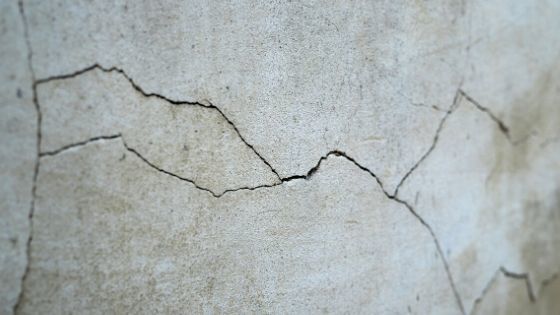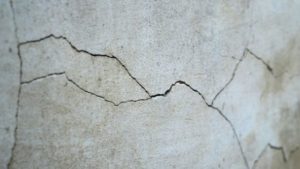Foundation heaving describes the rising of the ground beneath a structure that results in uneven shifts in its foundation. Naturally, this is not something that you want to face with regard to your home, as it can lead to severe damage and may threaten the integrity of the building overall. In this post, we’ll describe how to diagnose foundation heaving by explaining its causes and the indicators commonly associated with it. This way, you can get help as soon as complications show themselves.
Foundation Heaving Causes
Changing levels of moisture within soil cause heaving. When a previously dry part of earth takes in water, it swells as the water pushes its way between the small dirt particles. This can occur because of heavy rainfall and plumbing leaks.
If the soil has a high clay content, water will have an even more pronounced effect. Clay particles have an overall negative charge that attracts water molecules, which are polar (they have positively charged areas). As the water forms bonds with each clay particle and surrounds them, the space between each bit of clay is increased. When these tiny interactions take place cumulatively over a large area, the soil can then push upward into the home’s foundation.
Additionally, when there is water in the ground and the temperature outside dips below freezing, the water expands as it turns into ice, leading to heaving.
Signs of Heaving
There are a few signs that you can look out for to figure out if your home has experienced foundation heaving. Among the most noticeable are uneven areas in the indoor floors and outside in the driveway. You might notice that parts of the floor in certain rooms are slanted or the driveway may no longer be aligned with the main body of the house.
Your basement might also acquire a convex shape with cracks parallel to walls a few feet from them. Cracks that form intersecting, weblike networks in the foundation may be viewable from the outside of your house when you inspect its perimeter.
Another sign of heaving is the sticking of windows and doors. You may have trouble opening and closing them because heaving has caused their frames to become skewed.
Should you see any hints of heaving, you should call an industry professional to confirm whether you do or do not need to act on them. Call The Real Seal for a full diagnosis on your foundation and skillful repairs that solve the visible and unseen aspects of your heaving. We perform soil injection, leaky plumbing fixes, and basement crack repair.






